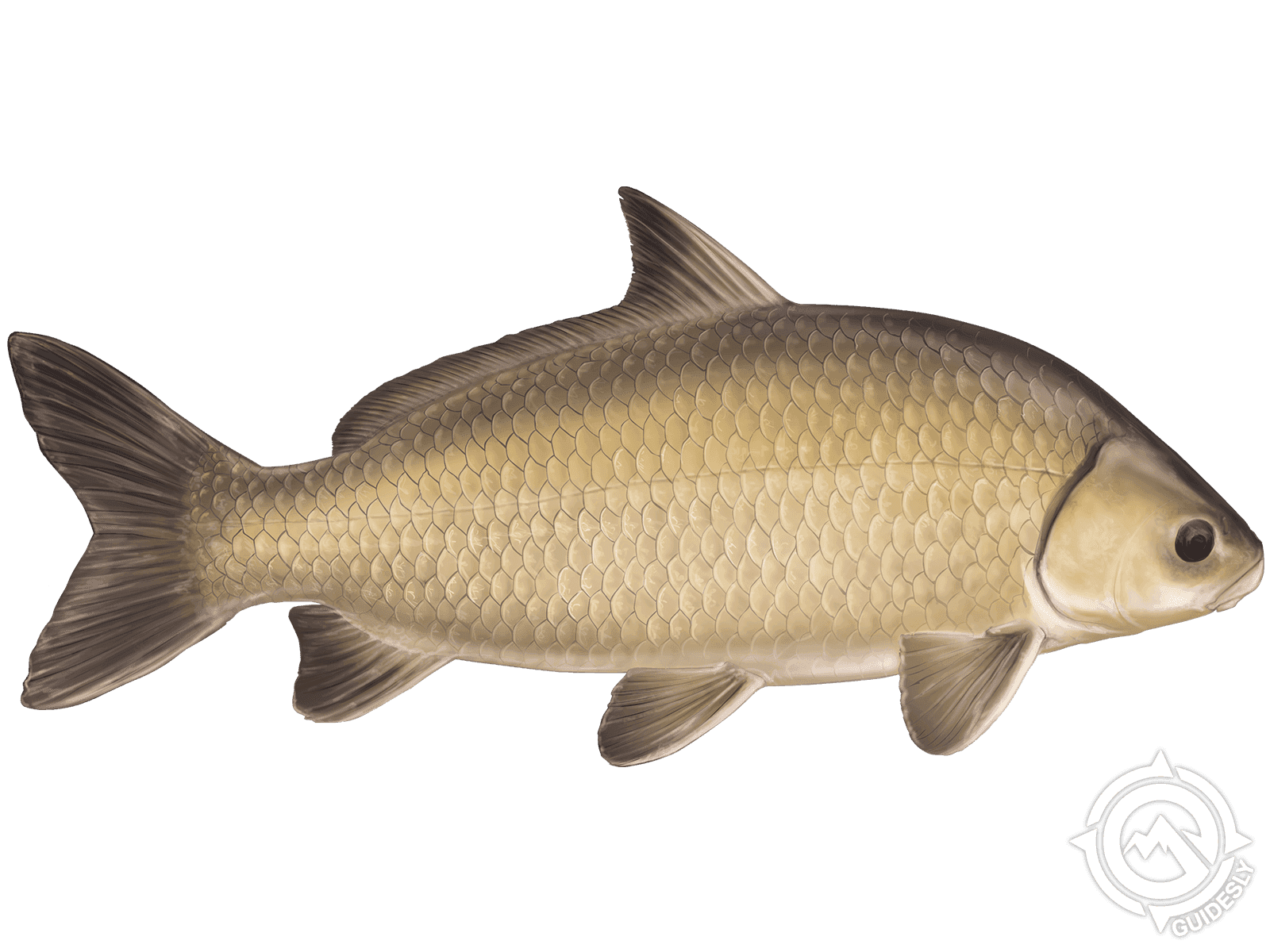Black Buffalo

Species Details
Ictiobus Niger
Catostomidae
Cypriniformes
Lake, Channels
20 - 56 lbs.
20" - 48"
Black Buffalo (Ictiobus niger) Fish Description
Also known as current buffalo or buoy tender, the Black Buffalo is a freshwater fish species of North American origin. Black Buffaloes belong to the sucker family (Catostomidae); they are related and physically similar to the bigmouth buffalo. The major difference is that the Black Buffalo has a smaller mouth yet thicker lips, a compact snout, and a more streamlined body. Their small mouths contain short and fragile pharyngeal teeth.
Black Buffaloes also have thicker bodies and are slightly darker in color than the bigmouth buffalo. They possess black dorsal sides, with gold, bronze, or dark green hues on the sides of their bodies; the juvenile males tend to have a darker color. The dorsal fins of Black Buffalo are long and sickle-shaped with around 27-31 rays; their anal fins have 8 to 9 rays, and the pelvic fins, 9 to 11. Their head and body are round. Their lateral line has around 36 to 39 big scales.
Diet and Size
Black Buffalo generally feed on plankton, small mollusks, insect larvae, and vegetation. Primarily, they eat eggs and algae. They also feast on leaves and bryophytes. Their diet is also benthic (those occurring at the bottom of the ocean). They especially love the Asian clam Corbicula.
Typically, Black Buffaloes measure around 20-30 inches. Their weight ranges from about 10 to 30 pounds. They are considered mature when they reach 2 years of age.
Interesting Facts About the Black Buffalo
- The Black Buffalo’s length of the body is three times its height.
- The length of its mouth is twice as big as the diameter of its eyes.
- Black Buffaloes can eat anything that enters their mouths. Studies even showed that almost half of what they ingest is not even edible (including mouthfuls of sand).
- The oldest 56-year-old Black Buffalo and one of the longest-lived catostomids ever recorded was found in the Mississippi Basin and Southern Black Lakes. However, a carbon dating process yielded the result that the oldest Black Buffalo found lived up to 112 years of age.
Black Buffalo — Fishing Techniques
Buffalo fishes are generally the most elusive and the most challenging species to catch. Anglers can outsmart them using the typical hook and line coupled with patience. However, despite some anglers’ dedication, Black Buffalo (like most buffalo fishes) is seldom caught. The modern method of fishing Black Buffalo suggests that anglers use specialized bows and arrows, and hunt them at night in shallow waters.
The IUCN Red List tagged the Black Buffalo as Threatened in Wisconsin, and a Special Concern species in Minnesota.
Habitat and Distribution
Black Buffaloes thrive in large rivers, sloughs, backwaters, reservoirs, impoundments, and large streams. They love deep freshwater with strong currents. They spawn from May to mid-June in the shallow waters of certain tributaries with temperatures ranging from 65-70°F. During the same period, they move to flooded areas with lots of vegetation.
Black Buffaloes are typically found in the rivers of North American from the Mississippi Basin to Canada. They are native to Minnesota, Iowa, South Dakota, Texas, Michigan, Louisiana, New Mexico, Mexico, and Oklahoma.






